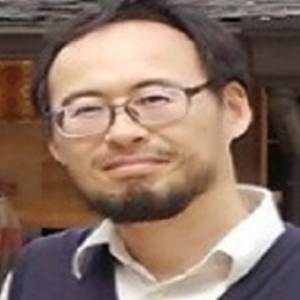Title : Interfacial novel phenomena on heterogeneous photocatalysis
Abstract:
Heterogeneous photocatalysis is a photon-driven reaction process with multiple elementary steps or phenomena at the interphase interface, involving generation and transport of electrons, radicals, atoms and/or molecules. It has found various applications, particularly in the field of environmental remediation, however, further activation of photocatalysis and/or its application in energy field is a challenging task towards a sustainable future society.
In this article, particular focus is placed on interfaces of heterogeneous photocatalytic systems, where various novel phenomena are exhibited as special interfacial behaviors. Two particular topics are selected to exemplify such phenomena.
Novel cocatalytic effects of new-type lanthanide oxychloride LnOCl (Ln=Sm,Nd) photocatalysts mechanically-grafted on BiOCl, which is evaluated by photoremoval of nitric oxide (NO) gas, are first introduced, with special emphasis on microstructural analysis on the interface. A significant cocatalytic effect is only exhibited in highly humid air, where, at the (assumed) steady-state, the maximal NO photoremoval rate is ~5 times more than pure BiOCl, or, 20 times if BiOCl would be the only active photocatalyst of the powder composite. There is a characteristic incubation period prior to activation of the novel behavior. Further, when LnOCl is grafted on TiO2 powder, the NO removal rate in humid air is almost completely eliminated. This is opposite to the case on BiOCl. Since, in dry air condition, there is no large difference between TiO2 and BiOCl, water molecules are essential for the special role of LnOCl. This interesting difference between TiO2 and BiOCl will be discussed, besides the novel photocatalysis mechanism involving interfaces.
And second, activation challenge of light harvesting by magnetic field is discussed. If a key (rate-determining) step of photocatalysis is controlled by magnetic field, wider environmental applications, as well as energy harvesting, would become possible.
Magnetic field effect (MFE) on homogeneous reaction systems has been relatively well-established, however, MFE research on heterogeneous systems, photocatalysis in particular, is limited, and the mechanism is not agreed-upon. Although several MFE parameters have been found responsible for photocatalytic dye degradation, significant roles of oxygen at/near interface are here emphasized. Molecular oxygen is paramagnetic, and typically involved with photocatalysis through ROSs (reactive oxygen species) generation and reactions. In the volume in close proximate to photocatalyst, electrostatic potential and the corresponding magnetic flux would be perturbed, resulting in net Lorentz force acting on dissolved oxygen (DO), which is responsible for MFE phenomena (OANS model). Short-range-order (SRO) diffusion in the Helmholtz layer just outside photocatalyst would be a key step, and correlated to magnetic adsorption/desorption. Through kinetic forces of friction and form drags, DO would cause fluid convection, as “magnetic” diffusion. Representative MFE features on heterogeneous photocatalysis, directly or indirectly associated with interfacial reaction mechanisms, will be discussed, including significant roles of oxygen and water, in terms of molecular perspectives and surface conditions of photocatalyst.



